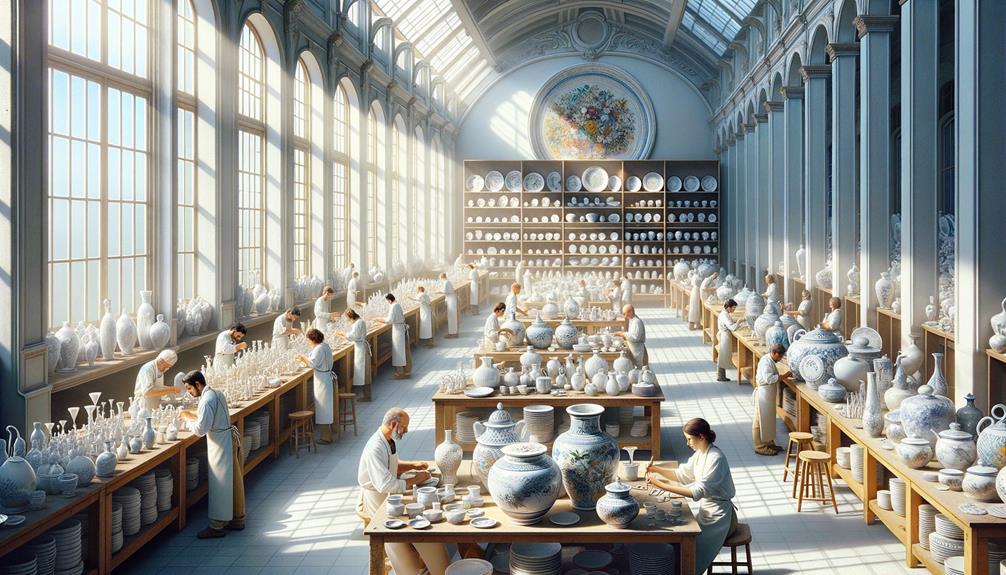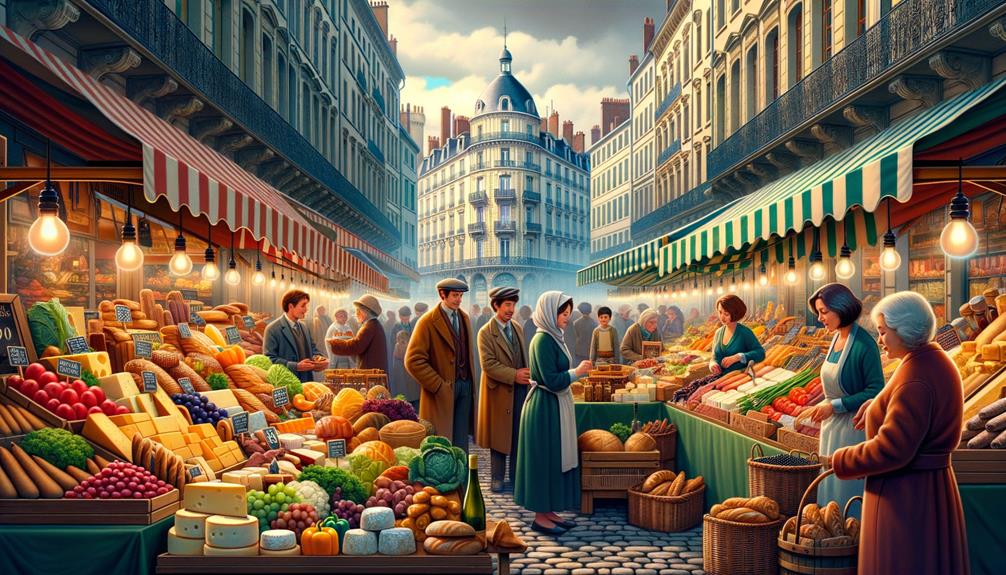I've always been fascinated by the legacy of the Limoges Porcelain Factory, which has been around since the late 1700s. When you hold one of their pieces, like the lively Oasis or the Middle Eastern-themed Iconic, the detailed designs and rich gold accents are truly impressive. The careful process of hand shaping, painting, and multiple firings results in perfect pieces that collectors love. But what really grabs my attention is how their work with modern artists keeps adding to their already excellent reputation. What's the secret behind their lasting appeal?
History of Limoges Porcelain
In the late 1700s, Limoges became known for its exceptional porcelain craftsmanship, with its first factory opening in 1771. This event transformed the quaint French town into a major hub for porcelain production. Walking through the cobbled streets of Limoges, you can almost sense the history in the air, with each corner sharing stories of skilled artisans dedicated to their craft.
The porcelain factory was more than just a building; it was a place where art and innovation came together. Professional artists hand-painted intricate designs on each piece, making porcelain a canvas for their creativity. The quality was unparalleled, featuring a flawless porcelain body and a unique translucent glaze that made Limoges stand out.
Today, the legacy of Limoges porcelain remains evident. Its recognition as the finest hard paste porcelain in the world is well-deserved. The town's rich natural resources, combined with the unmatched skills of its artisans, established Limoges as the French capital of porcelain production. It wasn't just about making porcelain; it was about creating pieces that told stories of excellence and human ingenuity. Limoges didn't just produce items; it crafted works of art that continue to inspire.
Iconic Collections

I am absolutely captivated by the vibrant gold accents in Royal Limoges' Oasis Collection. Inspired by Middle Eastern oases, each piece exudes luxury and fine craftsmanship. These designs aren't just simple porcelain; they're a journey through a rich cultural history.
Flamboyant Gold Accents
When you take a look at the Royal Limoges Iconic Collection, the gold accents quickly grab your attention, reminiscent of the grandeur found in Middle Eastern oases. The detailed designs on coffee pots, creamers, and dinner plates radiate luxury and elegance, highlighting the mastery behind Limoges porcelain.
These gold touches do more than just beautify each piece; they elevate a simple table setting into something truly extravagant. Dining with such elegance makes every meal feel special, transforming routine moments into memorable experiences. The gold accents aren't just for show; they celebrate life's finer moments and the grandeur we all aspire to.
Each curve and line in the Royal Limoges Iconic Collection tells a story of careful craftsmanship and timeless beauty. These items are not just practical; they make a bold style statement, turning the ordinary into something extraordinary.
Middle Eastern Inspirations
Admiring the rich gold accents, I can't help but see how Middle Eastern inspirations breathe life into the Royal Limoges Iconic collection. Each piece in this collection captures the splendor of Middle Eastern oases, turning any dining setting into a scene of luxury and elegance. The intricate designs, combined with the shimmering gold elements, create a visual delight that feels both modern and timeless.
The creation of these stunning porcelain pieces showcases Royal Limoges' dedication to blending traditional craftsmanship with contemporary design. The result is a collection that not only serves a functional purpose but also enhances the ambiance of any table.
Here's what makes the Iconic collection special:
- Lavish Gold Elements: Adds a touch of royalty and opulence.
- Middle Eastern Inspirations: Infuses cultural richness and visual appeal.
- Artistic Flair: Combines beauty with everyday functionality.
- Exquisite Craftsmanship: Reflects Royal Limoges' commitment to quality.
- Versatility: Perfect for special occasions and daily elegance.
The mix of Middle Eastern influences with porcelain production techniques ensures that each Iconic piece is a work of art, designed to inspire and enchant. This collection is a celebration of freedom through artistic expression, making every dining experience extraordinary.
Manufacturing Process
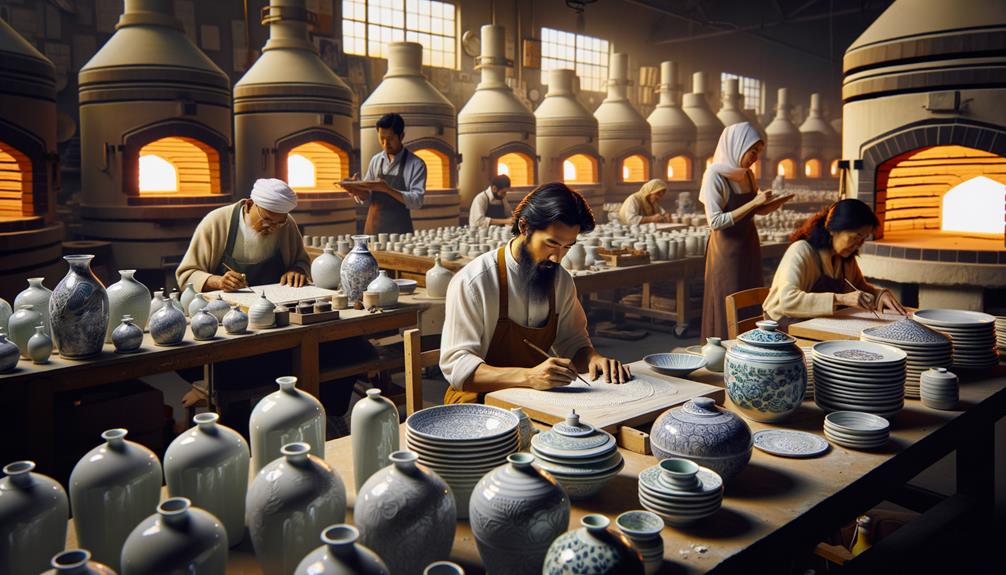
The process of making Limoges porcelain is really interesting. It all starts with picking out the best kaolin, feldspar, and quartz. Watching the craftsmen shape the porcelain with such skill is truly captivating. The final steps, where artists add decorations and the pieces are fired, make the porcelain come alive with elegance.
Raw Materials Selection
When selecting raw materials, Limoges porcelain factories focus on top-notch kaolin, feldspar, and quartz to ensure their porcelain remains of high quality. This choice is deeply rooted in tradition and expertise. The proximity to clay-rich sources like the river Vienne is crucial, providing an abundant and accessible supply of essential raw materials.
Watching the process, you can't help but admire the careful selection of kaolin, which is the foundation of porcelain production. This fine, white clay gives the porcelain its strength and translucency, making it highly valued. Feldspar and quartz are also key components, enhancing the porcelain's durability and brilliance.
What makes Limoges porcelain stand out includes:
- Kaolin: Known for its purity and strength.
- Feldspar: Helps in achieving a glass-like finish.
- Quartz: Contributes to resilience and a sparkling sheen.
- Local sourcing: Ensures consistent quality.
- Historical significance: A tradition dating back to King Louis XVI.
Each piece of Limoges porcelain reflects a legacy of excellence, born from a steadfast commitment to quality raw materials. This dedication is what distinguishes Limoges, allowing for exquisite craftsmanship and artistic freedom.
Crafting and Shaping
Watching the artisans meticulously mold and shape the porcelain, I'm struck by the blend of tradition and skill that breathes life into each piece. In the heart of the factory, the process starts with a delicate mix of kaolin, feldspar, and quartz. This combination forms the fine porcelain body that is the foundation of every Limoges creation.
As I observe, the artisans use techniques that have been refined over centuries. The porcelain pieces are carefully molded and shaped by hand, each movement precise and deliberate. It's almost like a dance, where every gesture adds to the elegance and refinement that Limoges is famous for.
The process goes beyond shaping; it's about ensuring each piece has the durability and smooth, translucent finish that defines Limoges porcelain. This is achieved by firing the pieces at high temperatures in specialized kilns within the factory.
Here's a glimpse into the process:
| Step | Technique | Purpose |
|---|---|---|
| Mixing | Hand blending | Create fine porcelain body |
| Molding | Hand shaping | Form elegant shapes |
| Firing | High temperature | Guarantee durability & finish |
In this factory, every porcelain piece tells a story of craftsmanship and heritage, a testament to the artistry that makes Limoges porcelain a symbol of luxury.
Decoration and Firing
The magic of Limoges porcelain truly shines in the decoration stage. Watching skilled artists at work, each brushstroke transforms a piece into a unique masterpiece. These professionals hand-paint intricate designs, ensuring that each item reflects the rich heritage of Limoges porcelain.
Adding decorative elements like gold or platinum accents requires meticulous attention to detail. These luxurious touches give each piece a distinct elegance, making them stand out in the world of fine porcelain.
- Hand-painted designs: Each piece is crafted by professional artists.
- Gold and platinum accents: Applied carefully to enhance beauty.
- Multiple firings: Ensures perfect translucency and luminosity.
- High-temperature firing: Reaches up to 1400°C for durability and a pristine finish.
- Skilled craftsmanship: Essential for maintaining quality and artistic value.
After the decoration is complete, the pieces go through multiple firings. This step not only ensures durability but also brings out the desired translucency and luminosity that define Limoges porcelain. The entire process demands a high level of precision and skill, making each piece a true work of art.
Notable Artists
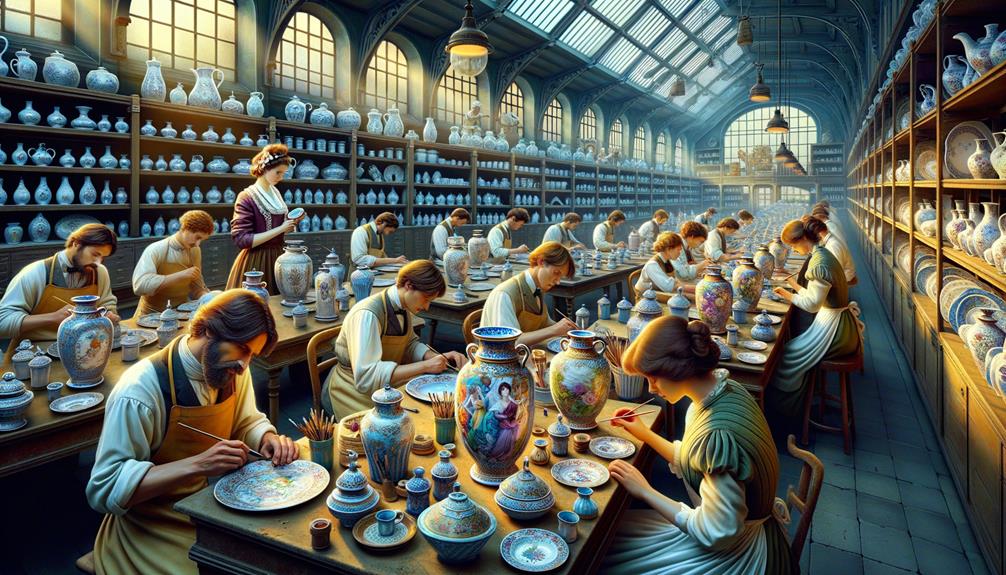
Among the many artists who have worked with Limoges, Franz Bischoff's floral and landscape pieces are especially prized by collectors. His talent for capturing nature's delicate details on Limoges porcelain elevates it to fine art. Bischoff's hand-painted designs are not only beautiful; they embody Limoges' commitment to craftsmanship and detail.
In auction houses, Bischoff's works often fetch high prices, demonstrating their enduring appeal. Limoges porcelain, adorned with his artwork, turns everyday items into sought-after collector's pieces. Whether it's a small painted plaque or a bonbonniere, the artistry showcased highlights the collaboration between an iconic brand and a visionary artist.
It's amazing how these pieces blend functionality with high art. The detailed hand-painted designs by artists like Bischoff have greatly enhanced the brand's artistic reputation. His work is a vibrant chapter in the history of Limoges porcelain, showing that true art and craftsmanship create masterpieces that stand the test of time.
Contemporary Collaborations
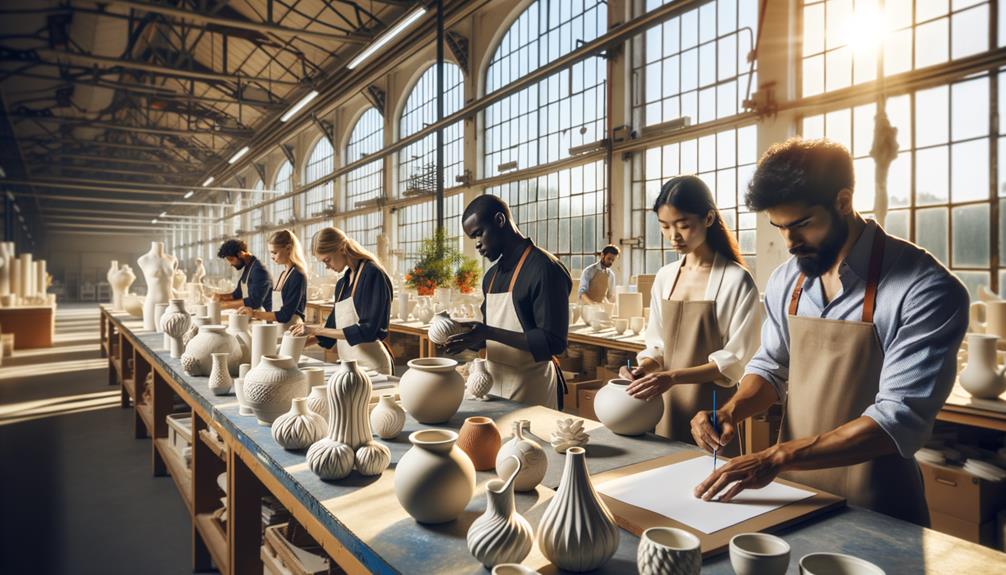
Contemporary collaborations between Limoges porcelain and well-known artists like Roy Lichtenstein, Jeff Koons, and Cindy Sherman beautifully blend traditional craftsmanship with modern artistic visions. These partnerships breathe new life into the classic art form, merging historical techniques with cutting-edge designs that attract both collectors and fans.
The porcelain factories of Limoges have adapted well to these modern collaborations, producing pieces that are not just objects but statements. Seeing this fusion firsthand is a revelation, showing how tradition can evolve while maintaining its essence. Pieces from these collaborations have sold for impressive amounts at top auctions, highlighting their value and appeal.
- Roy Lichtenstein's bold, comic-inspired designs on porcelain show how contemporary art can transform traditional mediums.
- Jeff Koons' playful sculptures crafted with Limoges porcelain emphasize the meticulous nature of his work.
- Cindy Sherman's unique, thought-provoking pieces bring a narrative depth to the porcelain, making each piece a story in itself.
- The high auction prices these pieces achieve demonstrate their desirability and market value.
- The integration of historical and modern elements appeals to a wide range of collectors and art lovers.
These contemporary collaborations show the endless possibilities when tradition meets innovation.
Collecting and Valuing Limoges
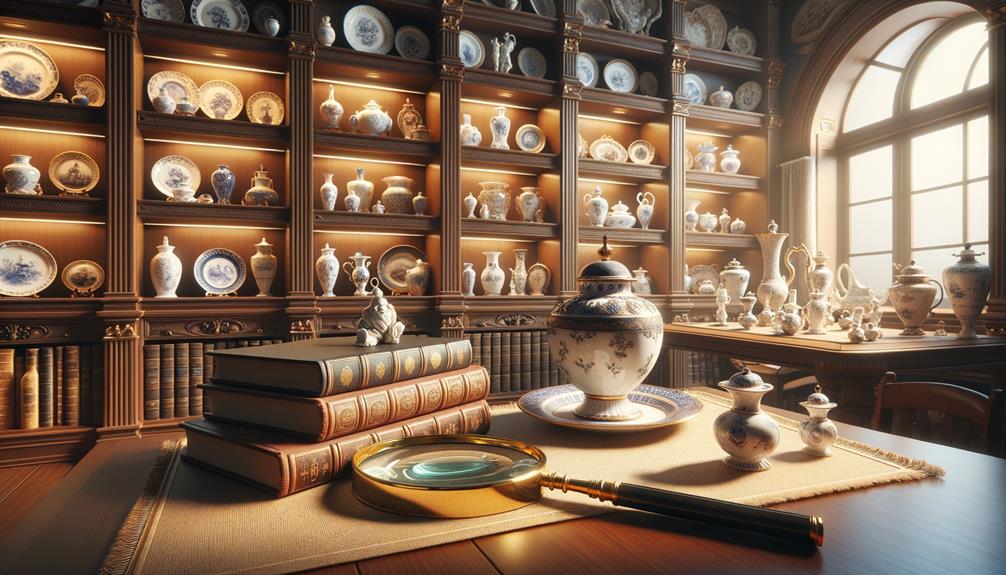
Seeing the blend of tradition and modernity in today's collaborations brings a greater appreciation for the intricate art of collecting and valuing Limoges porcelain. Each Limoges piece holds a rich history, marked by its flawless porcelain, clear glaze, and the stunning hand-painted decorations by skilled artists. Collectors are drawn to the craftsmanship and historical importance embedded in every piece.
When I look at Limoges porcelain, I focus on the detailed designs and unique shapes, like trinket boxes and vases, which highlight the artistic skill involved. The clear glaze is a sign of quality, and the Limoges marks confirm its authenticity, often indicating where it was made and sometimes even a French government quality stamp.
Well-known companies like Haviland & Company and Bernardaud have increased the value of Limoges porcelain, with some pieces selling for anywhere from a few thousand dollars to over $10,000. Complete sets usually hold more value than single items, so condition and uniqueness are crucial in evaluating them. Collecting Limoges porcelain is about more than just owning beautiful items; it's about preserving a legacy of flawless craftsmanship and timeless elegance.
Frequently Asked Questions
Is Limoge Porcelain Worth Anything?
I've found that Limoges porcelain can be quite valuable. Prices can range from a few thousand dollars to over $10,000 for exceptional pieces. The worth really goes up with high-quality craftsmanship, complete sets, and detailed designs.
What Is Special About Limoges Porcelain?
What makes Limoges porcelain so special? Its fine quality and translucent appearance are truly stunning. The hand-painted designs by skilled artists highlight incredible craftsmanship and attention to detail, turning each piece into a unique and valuable collectible.
Why Is Limoges Porcelain so Expensive?
I've always been curious about why Limoges porcelain comes with such a high price tag. The answer lies in its exceptional quality, detailed hand-painted designs, and rich history. Each piece is a work of art, crafted with incredible skill and dedication, making it truly valuable.
How Do You Identify French Limoges Porcelain Marks?
If you want to identify French Limoges porcelain marks, keep an eye out for inscriptions that say 'Limoges' or 'France.' Recognizable factory marks from places like Haviland & Co., Bernardaud, or T&V, along with government approval stamps, can confirm the piece's authenticity and help trace its history.

